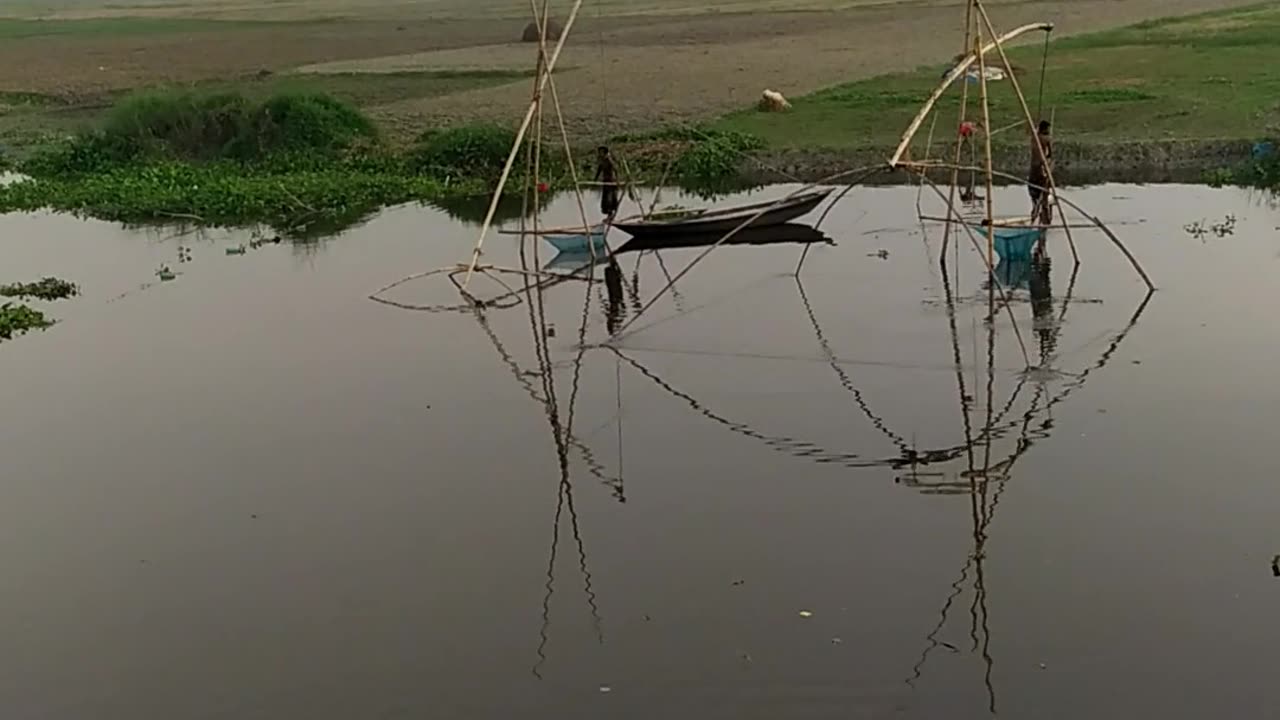Premium Only Content

Fish farming, also known as aquaculture
Fish farming, also known as aquaculture, is the practice of cultivating fish or other aquatic organisms in controlled environments such as tanks, ponds, or cages. It is a method used to meet the growing demand for fish as a food source, alleviate pressure on wild fish populations, and reduce overfishing.
In fish farming, fish are raised in a controlled environment where water quality, temperature, and feeding can be regulated. The process typically involves the following steps:
1. Broodstock Selection: Healthy adult fish with desirable traits are selected as broodstock, ensuring genetic diversity and productivity.
2. Spawning: The selected broodstock are induced to spawn, and the fertilized eggs are collected and incubated in hatcheries.
3. Larval Rearing: Once the eggs hatch, the larvae require special care, including appropriate water conditions, feeding, and protection from diseases.
4. Nursery Rearing: The young fish, known as fry or fingerlings, are transferred to nursery ponds or tanks for further growth until they reach a suitable size for transfer to grow-out systems.
5. Grow-out Systems: The fish are transferred to larger tanks, cages, or ponds where they are reared until they reach marketable size. Feeding, water quality management, and disease control are crucial during this stage.
6. Harvesting: When the fish reach the desired size, they are harvested using various methods such as netting, seining, or draining ponds. The fish are then processed and prepared for distribution and sale.
Fish farming can involve various species, including freshwater fish like tilapia, catfish, and trout, as well as marine species such as salmon, sea bass, and shrimp. Different farming methods are used depending on the species and the available resources.
It's worth noting that sustainable fish farming practices aim to minimize environmental impact, optimize feed efficiency, and prioritize the welfare of the farmed fish. These practices include efficient waste management, responsible sourcing of feed ingredients, disease prevention measures, and minimizing the use of antibiotics or chemicals.
Overall, fish farming plays a significant role in meeting global seafood demand, providing a controlled and sustainable alternative to wild fish capture.
-
 9:40
9:40
Tactical Advisor
7 hours agoBest Home Defense Shotgun Build | Genesis Gen 12
4.4K -
 56:44
56:44
VSiNLive
3 hours ago $2.25 earnedFollow the Money with Mitch Moss & Pauly Howard | Hour 1
34K1 -
 1:05:48
1:05:48
The Amber May Show
7 hours ago $1.06 earnedBig Balls | You Know It's Bad When Legacy Media Reports On Big Balls | Sam Anthony
13.3K1 -
 LIVE
LIVE
SoniCentric
1 day agoEnjoy a COZY Valentine's Day Escape to Paris with the BEST blend of Romantic Music
145 watching -
 1:59:52
1:59:52
Revenge of the Cis
5 hours agoEpisode 1447: Love Train
45K3 -
 1:03:34
1:03:34
In The Litter Box w/ Jewels & Catturd
1 day agoCONFIRM KASH NOW! | In the Litter Box w/ Jewels & Catturd – Ep. 742 – 2/14/2025
67.6K51 -
 13:38
13:38
Simply Bitcoin
12 hours ago $4.94 earnedFED’s Worst NIGHTMARE Just Got WORSE | $13M Bitcoin is Coming!
81K6 -
 10:25
10:25
Megyn Kelly
1 day agoNew Video and Details Emerge Showing "Serial Fraudster" Blake Lively's Past Actions, with Ruthless
73.4K13 -
 1:21:04
1:21:04
Twins Pod
17 hours agoElon Took Away His X Verification, I Wonder Why... | Twins Pod - Episode 52 - Jake Shields
72.1K14 -
 6:01:44
6:01:44
bltgamers
10 hours ago🟢LIVE -Tomb Raider Adventure on Valentine's Day
27.9K3